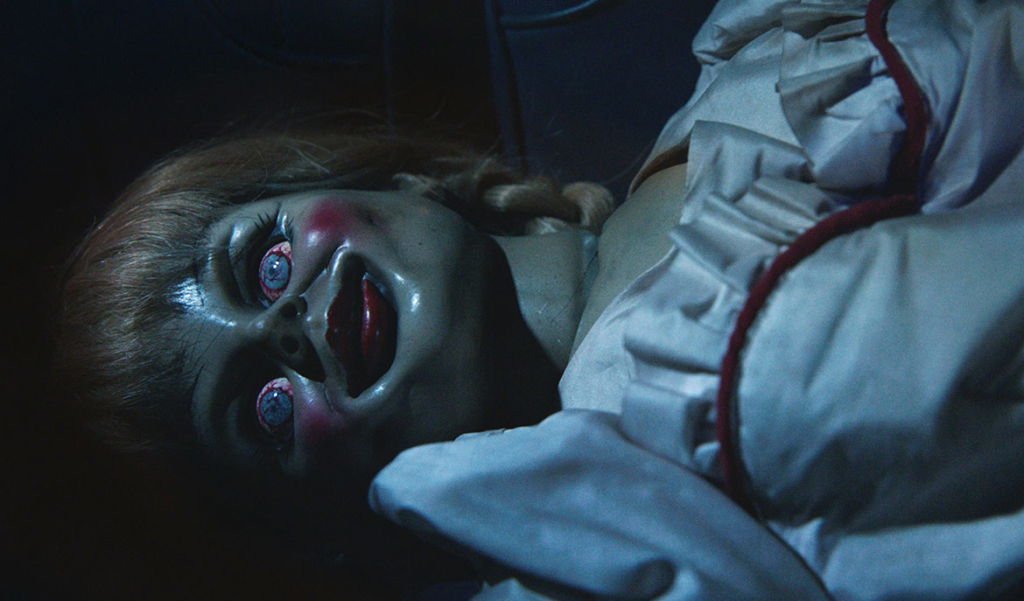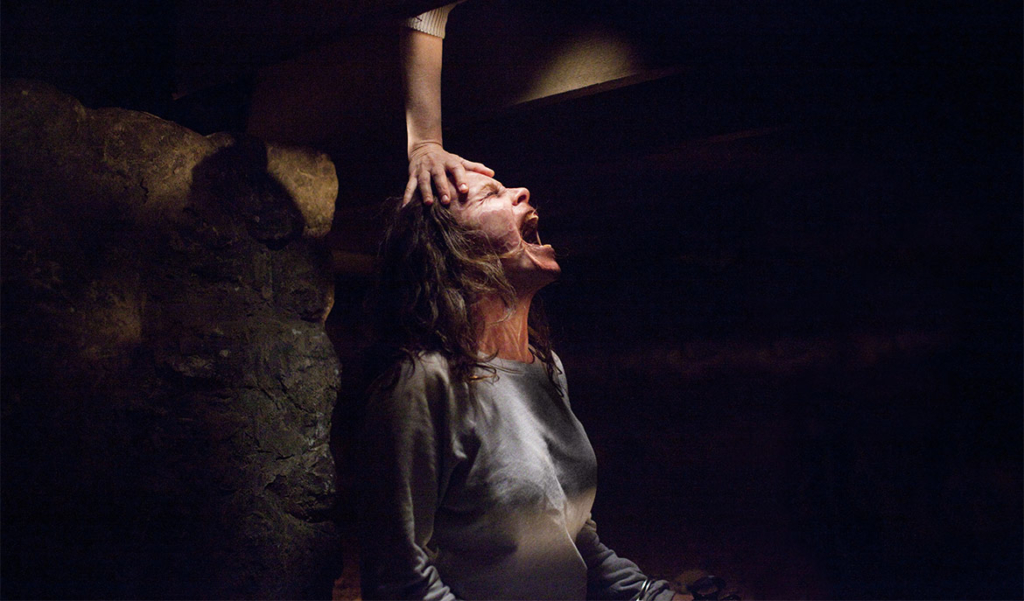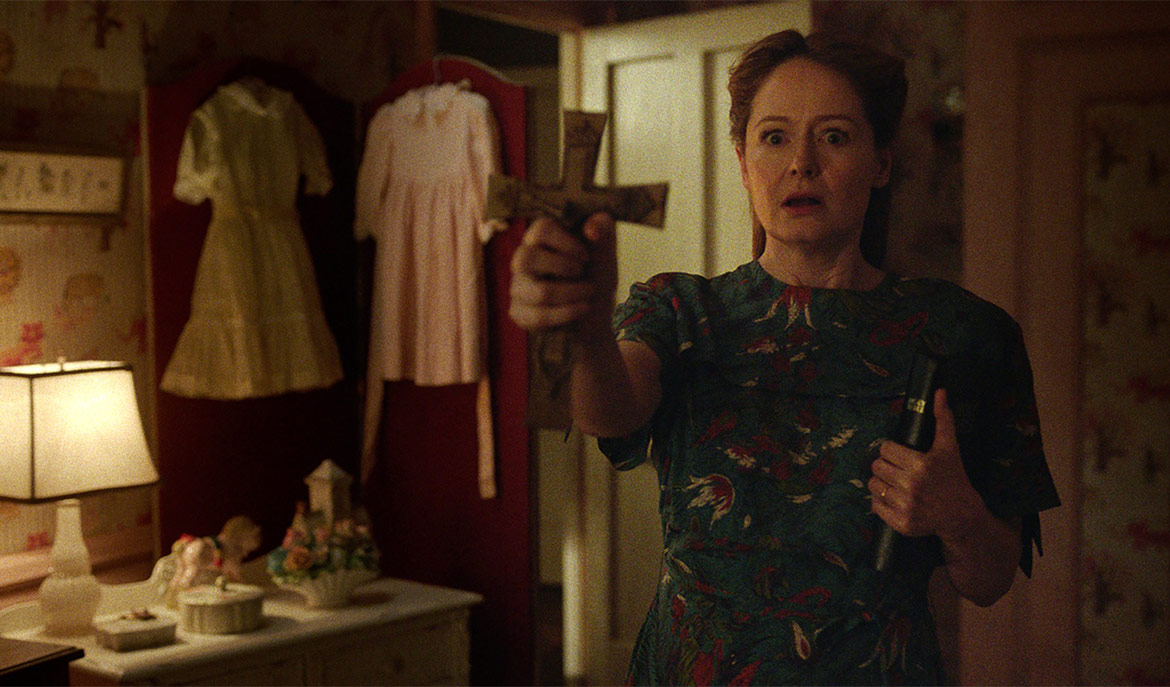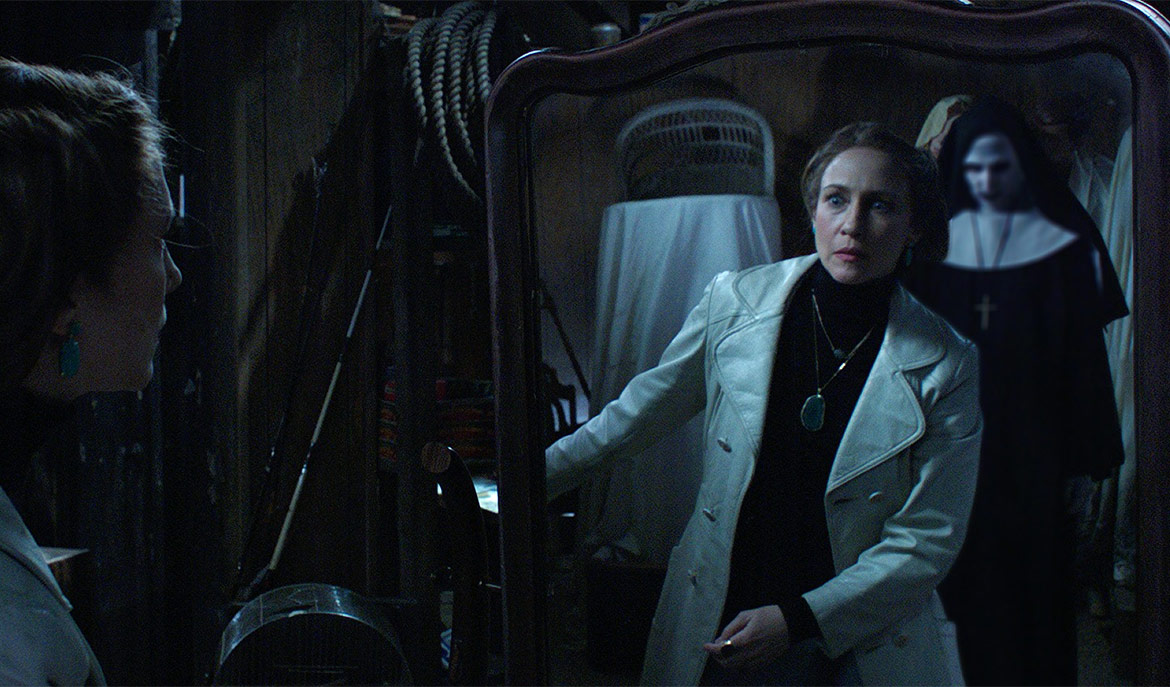Tag: A24
A24 and the Emergence of Post-Horror
A24 has established itself as a force to be reckoned with in the landscape of modern cinema, an unassuming production company and distributor whose ghostly arrival has garnered widespread critical acclaim, and even prestigious recognition from The Academy itself with Moonlight’s dark-horse victory over La La Land at the 2017 Academy Awards ceremony. The company has made a name for itself in the industry by releasing low-budget, critically successful indie films that may win awards, but don’t necessarily win over audiences.
In the past few years, an area which has prevailed as one of A24’s fortes is their ever-growing catalogue of unique indie horror films. Since the establishment of the literary horror genre, critics have been determined to define the content depending on the text (gothic, supernatural, fantastical, naturalistic, psychological, etc), and as the genre continues to develop, the discussion surrounding these definitions and their applicability has carried over into the world of film. Sitting atop the mountain of commercial and critical success for A24 is Ari Aster’s troublingly macabre masterpiece, the 2018 film Hereditary. One of the most critically acclaimed movies of the year, Hereditary has amassed an impressive 89% fresh rating on Rotten Tomatoes on top of its impressive box office intake. But a glaring discrepancy lies between the critics-to-audience reaction to the film.
Similarly to its’ A24 peers The Witch and It Comes at Night, the film failed to impress mainstream moviegoers generally and received a D+ grade on CinemaScore – a polling website which measures and rates audience viewing experiences in cinemas across America. What separates these films from their jump-scare riddled rivals, and is it feasible to fund more projects like Hereditary in future if audience reactions continue to dip so far below their critical counterparts? The term ‘post-horror’, coined by Steve Rose in his Guardian piece “How post-horror movies are taking over cinema”, has been used to define this current vogue subgenre of horror. But what does it mean, and where did it come from? Is it really a new genre or just a new way of presenting classic horror ideas? Three horror-fanatics, Aoife, Jamie, and Samantha, will discuss a number of topics related to this in an attempt to figure it all out!

Sam: Have A24 created a new, better style of horror film or are these films nothing we haven’t seen before, but something audiences are no longer used to? Aoife: I would argue that it’s still horror but it’s returning to a style of subtle scares we’d have seen in the 60s and 70s, as opposed to the relentless gore porn a la Eli Roth we’ve been OD-ing on for the last 15 years. Something I remember about Haunting of Hill House (1963) is how understated but effective the scares were, for example, mirrors hung at weird angles to make the rooms look off created an incredible sense of uneasiness. Jamie: I’d put forward that in a way it is a new style of horror, besides a few exceptions of films like The Shining, Rosemary’s Baby, the original Suspiria, etc., although I’d be tentative to describe it as “better” than anything that has comes before it – people like what they like and whether one style is better than the other is entirely subjective. But I feel that A24’s contributions are distinctly more arthouse than any (successful) horrors with a more subtle approach to scares that we’ve seen in the past. Aoife: I agree the films A24 have pushed are more arthouse than the mainstream, and I suppose that’s the crux of my point – arthouse films are out there, they just haven’t been getting the big releases A24 are giving their films. Jamie: I suppose in that case the argument could be made that A24 are introducing a new audience (or maybe just resurrecting an old one) to modern horror, more so than creating an entirely new sub-genre. I can’t think of too many horror films released since the early 80s, right up until the past 4 or 5 years or so, which could be appreciated equally by both horror buffs with a craving to be spooked and movie geeks who are looking at films from a more analytical perspective. Sam: Horror films started out in the silent era and didn’t need to wait for the transition to sound other genres did, they were already popular. Horror has always been a staple of cinema, the first filming of Frankenstein was in 1910, but it, like all things, goes through cycles of popularity. I would argue that the emergence is just repeating itself from the 60’s and 70’s as Aoife said. Films are about when and where they were filmed, not when the plot was set, so they reflect the culture we currently live in. That calls into question what about our society are these films trying to represent. Jamie: I think it’s a good point and it’s fair to compare these ‘post-horror’ films to classic releases from the 60s and 70s, but I also believe that what sets these A24 movies apart from similarly slow-paced, atmospheric films of the past is their focus on the feeling of dread which generally stems from a much more ‘human’ place. Forget the demonic presence or the witch rituals, for me the real horror in these films comes from the collapse and failure of places or people we would typically turn to for refuge – the safety of our own home, the relationships with (or genetics inherited from) our families, the state of our own mind, and so on. Sam: I completely agree with you there about where the horror comes from in these films, which is a perfect lead into my next point.

Classic vs Modern vs Post-Horror: Sam: Isn’t the fact that horror films have abandoned jump scares and gore a positive thing? Now they can appeal to a wider audience as there is less there to immediately turn them off. Those who enjoy traditional horror films however may turned off because they’re not “scared” in the typical sense anymore. The emotion that horror elicits doesn’t have to be extreme, it can be a feeling of repulsion or foreboding; a heightened sense of alertness that manifests physically. The general public is turned off because they’re not getting what they’re seeking from these movies; the adrenaline rush of being frightened. Maybe they just don’t want to be horrified in the way that these A24 films are attempting to deliver on. Aoife: I don’t think that’s the case, genre fans who are au fait with pre-Blumhouse horror would be much more forgiving of ‘post-horror style’ scares. The general public though, perhaps. Those people who don’t actively seek out horror (like us weirdos) and only go to see the movies everyone is talking about because they expect to jump out of their seats with fright? No one can blame those guys for being annoyed when they’re presented with the likes of It Comes at Night. The slow-paced building of tension with muted release must be maddening to them, especially when you compare the film with the trailer. Jamie: I’m not sure that these films abandoning jump scares necessarily equates to them being more palatable to a wider audience. I think people who are actively turned-off by jump scares tend to have a dislike towards the grim and macabre in film generally – I’m not sure the likes of The Witch or Hereditary would tick the enjoyment boxes for these people as they maintain those disturbing elements which many people look to avoid. On top of that, the arthouse approach, slow pace and lack of jump scares eliminates another demographic of moviegoers who are hoping to see a horror film specifically to experience exactly that. The only wider audience I feel these movies could resonate with who may not enjoy ‘traditional’ horrors are genuine movie-buffs, people who have an appreciation for how the films are put together with regard to writing, cinematography, acting, atmosphere etc. Aoife: I agree with Jamie on that one, I can see film-buffs who might usually turn their noses up at horror enjoying these despite their prejudices. Sam: I have to agree with you there too Jamie, there’s no denying how well put together these films are. There has been mention however of It Comes At NIght being the kind of film all audiences are tired of as they’ve had enough of the “trapped in isolation during a zombie attack”, and though It Comes At Night certainly isn’t that film, it does appear to be at first glance. Deadline Hollywood states poor word-of-mouth is what kept viewings low. Jamie: Absolutely, that movie is obviously a far cry from a zombie apocalypse isolation movie but I think the pre-release marketing and the resulting word-of-mouth really hurt the viewership and reputation for the film, which is a shame. Sam: Speaking of marketing, maybe we should turn our attention back to the production company that started this whole conversation.

Audience vs Critical Reception: Jamie: Much has been made about the discrepancies between the critical reviews and the audience reaction when it comes to these select horror films in the A24 catalogue. What does this discrepancy look like, and what exactly do we think is the reason for it? Sam: There’s been a definite trend in the market to bring out films loaded with jump-scares, we’re already on the sixth film in the Conjuring universe with another two in the works and no sign of their profits slowing down. Audiences live for these types of films, they hear the tinkling opening notes and the dark hallway and know exactly what they’re in for. There’s going to be a ghost, generally a vengeful one, and a group of people who can’t escape its haunted grasp. This tried and tested plot has been in vogue for quite a while after audiences got tired of the shaky found-footage horror films á la Paranormal Activity. And I think therein lies the issue, if you ask the Average Joe what his favourite horror film is, how many people are going to answer “It Comes At Night”? Of course there are the die-hard horror fans who have a whole repertoire of films under their belt you’ve probably never heard of (I just learned about Basket Case the other day) but there aren’t enough of them to be heard over the scores of “That was the worst move I’ve ever seen” because it wasn’t the movie those people were expecting. Aoife: It’s worth noting that while these films polarised audiences, it would be drawing a false conclusion to assume that the more mainstream Blumhouse equivalents went down much easier. Paranormal Activity has an Audience Score on Rotten Tomatoes of 56%, Anabelle 36%, and The Purge 30%… Jamie: Aoife makes a good point, the only issue I’d raise is who we think the demographic of people logging in to Rotten Tomatoes to leave their little thinkpiece reviews are – a majority are very likely to be major film buffs. I think Cinemascore would make a more accurate reflection of initial audience reaction to films since you don’t have to log into Rotten Tomatoes to share your opinion, the scores are defined through ballot polling at the screening of the movies. Looking at those scores, Hereditary got a D+, It Comes at Night got a D, The Witch probably didn’t have a wide enough release as it doesn’t have a Cinemascore at all, Mother! got an F…In contrast Annabelle got a B rating here, so did Paranormal Activity 2, Insidious 3 has a B+, etc. I feel as though the audience who is bringing in the $143 million box office for Paranormal Activity 4 (nearly twice Hereditary’s box office, which remains A24’s highest grossing film) are generally teenagers looking for a quick spook, and if that’s what they get they will likely rave about the movie regardless of any critical scrutiny. Aoife: Cinemascores are notoriously tough on horror films, between 1986 and 2017 nineteen films got an F and of those nineteen, more than half are horror movies, though I concede that all those Blumhouse releases you mention Jamie have pretty excellent scores. That makes me wonder are we looking at this all the wrong way, it’s not that A24 have a ‘je ne sais quois’ that leaves critics enamoured and audiences bored, and it’s not that they’re necessarily doing anything all that groundbreaking, but it’s that Blumhouse have identified an X-Factor and know how to exploit it? Jamie: I definitely think Blumhouse have nailed a formula in terms of churning out horror films that follow very similar plot-points and scare tactics. But for the most part they remain critically panned and still mainly appeal to one specific demographic, and it seems to me that the formula may be starting to fail them somewhat as A24 continue to gain traction and find success with this new breed of horror that seems to go against the grain with regard to the path Blumhouse have laid out. Sam: I think we need to talk about A24’s marketing techniques as part of this discussion too. You ask anyone who went to see Hereditary if it’s the film they expected from watching the trailer and if they say yes they’re lying. All of their horror films are like this, and it’s both a blessing and a curse. It means for an audience member you’re going in blind, never getting what you expected, but for many this is exactly what turns them off. They wanted a scary film where they’re clutching their popcorn or laughing at the reactions of everyone around them. They’re looking for the adrenaline rush of being truly frightened, heart quickened and spending the walk home glancing over their shoulder… Jamie: I completely agree, the marketing of these movies is a crucial talking point for this discussion around reaction discrepancies. Arguably every horror film trailer A24 has released so far has been selling false promises, implying that these movies could be viewed in the same vein as films like IT, The Conjuring, Insidious, and so on. Inevitably this leads to disappointment on the part of people who go into these movies looking to destroy their armrests and jump out of their seats for the majority of the movie – multiple people I’ve spoken to personally have described movies like Hereditary or It Comes At Night as “boring”. But on the flip-side, would Hereditary have made nearly $80 million at the box office if it was marketed as the film it actually is, i.e. a slow-paced family drama with some horror elements and a gut-wrenching atmosphere that can make you feel physically ill? It’s a catch 22 for me, because on the downside you run the risk of disappointing a large percentage of your audience, but on a positive note you rake in enough money to fund that next risky project.

Looking at A24’s recent horror film output, and at how much we have managed to both agree and disagree with one another in the space of one conversation, the conclusion can be reached that art is, simply, subjective. The idea of post-horror as a genre seems to both fit and not depending on how you interpret the film, which though they are certainly influenced by classic horror films, stand alone in current cinema. It can be agreed however that these new style of films, whether post-horror or not, are certainly contributing to a revival of the genre.



